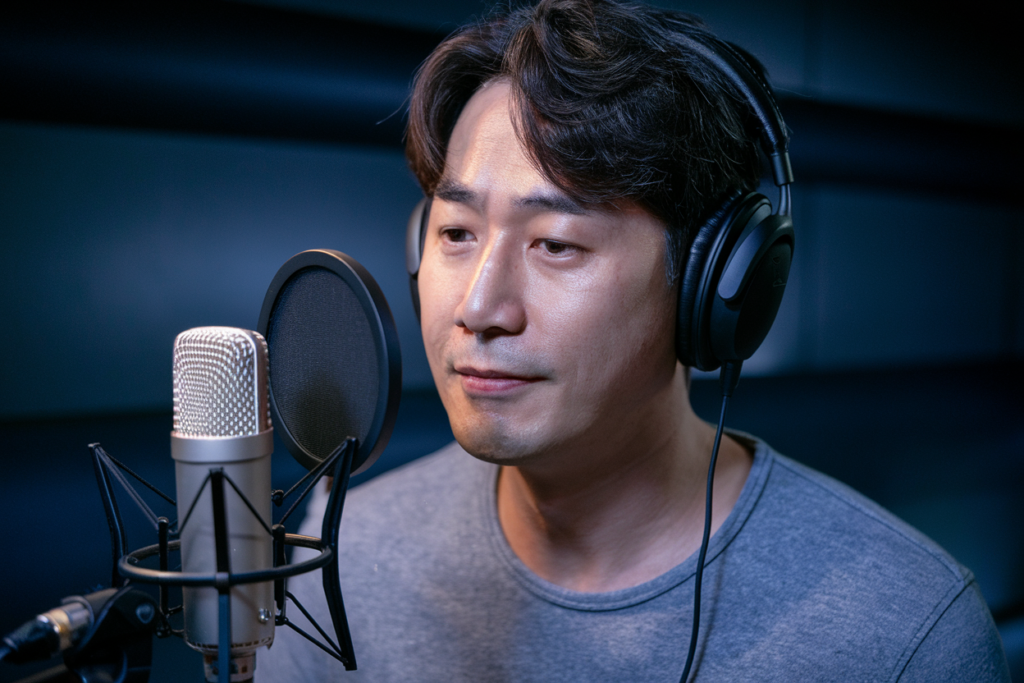Key Takeaways
- The globalization of the Korean language is driven by cultural exports such as K-pop, K-dramas, and cuisine, sparking widespread interest in learning Korean.
- Key figures in the K-pop industry, like BTS and BLACKPINK, enhance accessibility to the language through bilingual lyrics and cultural interaction with international fans.
- Popular K-dramas introduce global audiences to conversational phrases and cultural nuances, increasing curiosity about the Korean language.
- Technological advancements, including online language-learning platforms and apps, make studying Korean more accessible than ever for learners worldwide.
- The rise of Korean cuisine globally encourages individuals to explore the language associated with popular dishes like kimchi and bibimbap.
- Educational institutions are responding to growing demand by offering more comprehensive programs focused on teaching Korean language and culture.
Ever wondered how the Korean language went from a regional dialect to a global phenomenon? The journey of Korean language globalization is nothing short of fascinating. As K-pop, dramas, and cuisine capture hearts worldwide, the demand for learning Korean has skyrocketed.
Overview of Korean Language Globalization
The Korean language’s globalization stems from a mix of cultural exports and technological advancements. K-pop, dramas, and cuisine significantly contribute to this phenomenon. As these elements gain popularity, more people become interested in learning the language.
K-pop artists like BTS and BLACKPINK have turned global audiences’ heads. Their music often includes both Korean lyrics and English translations, making it accessible while promoting the beauty of the language. This crossover has encouraged fans worldwide to dive deeper into Korean culture.
K-dramas also play a pivotal role in spreading the language. Popular series like “Crash Landing on You” or “Squid Game” attract millions of viewers outside Korea. These shows not only entertain but also introduce viewers to conversational phrases and cultural nuances, sparking curiosity about learning Korean.
Additionally, Korean cuisine’s rise in international culinary scenes complements this trend. Dishes like kimchi or bibimbap are now household names around the globe, leading many to explore the language behind these flavors. Food enthusiasts often seek out recipes that require understanding basic terms in Korean.
Online platforms enhance accessibility too. Language-learning apps provide interactive ways for individuals to learn at their own pace, further fueling interest in mastering Korean.
As demand grows, educational institutions respond by offering more courses focused on the language and its rich culture. This expanded curriculum paves the way for future generations eager to connect with Korea’s diverse heritage through its language.
Overall, the combination of entertainment and education creates a dynamic environment where learning Korean becomes an appealing goal for many across different backgrounds.
Historical Background
The Korean language’s journey towards globalization showcases various influences and transformations that shaped its current status. Understanding this history helps appreciate the factors contributing to its growing prominence worldwide.
Early Influences on Korean Language
Korean’s roots trace back centuries, heavily influenced by neighboring cultures. Chinese characters significantly impacted vocabulary and writing systems during the Three Kingdoms period (57 BC – 668 AD). This influence persisted through dynasties, embedding numerous Sino-Korean words into everyday language. The introduction of Hangeul in the 15th century by King Sejong marked a pivotal moment, making literacy more accessible to the general population and allowing for greater expression of Korean identity.
Language Evolution Through Dynasties
As Korea transitioned through dynastic changes, so did its language. The Goryeo Dynasty (918-1392) saw increased contact with Mongolian and Central Asian languages due to trade and invasions, leading to linguistic adaptations. The Joseon Dynasty (1392-1897) further refined Hangeul while maintaining a strong presence of Classical Chinese; this duality characterized educated discourse for centuries.
In the modern era, Japan’s colonial rule from 1910 to 1945 imposed Japanese on Koreans, suppressing native language use. Post-liberation efforts revitalized Korean as a symbol of national pride. Since then, globalization has propelled Korean into international conversations—music lyrics in K-pop often blend English phrases with Korean, enhancing accessibility for global audiences while retaining cultural authenticity.
This historical context establishes how deeply intertwined culture and language are in shaping perceptions and fostering connections across borders today.
Globalization in the 20th Century
The 20th century marked a pivotal era for the Korean language as it transitioned into a global entity. This transformation was fueled by a combination of cultural exports and technological innovations, which brought Korean culture to international audiences.
The Role of Media and Technology
Media and technology played crucial roles in spreading the Korean language worldwide. Television shows, movies, and music became popular beyond Korea’s borders, introducing new audiences to the language. For instance, K-dramas offered not only entertainment but also exposure to conversational phrases and cultural expressions that resonated with viewers globally. Streaming platforms enabled easy access to these programs, allowing non-Korean speakers to engage with content in their own languages while exposing them to authentic Korean dialogue.
Technological advancements further facilitated this spread. Online platforms for learning languages emerged, making it easier than ever for individuals interested in mastering Korean. Apps and websites provided interactive lessons that combined traditional learning methods with modern techniques like gamification. This accessibility encouraged many people around the world to embark on their journey of learning Korean.
Korean Wave: Hallyu Phenomenon
The Hallyu phenomenon signifies the rise of South Korea’s cultural influence across various sectors, particularly through music (K-pop), television dramas (K-dramas), and films. This wave significantly impacted global perceptions of Korea while simultaneously popularizing its language.
K-pop groups like BTS and BLACKPINK attracted millions of fans internationally. Their songs often feature both Korean lyrics and English translations, making them accessible while encouraging listeners to explore more about the language behind their favorite tunes. Fans frequently delve deeper into lyric meanings or song themes out of curiosity about the culture tied closely to these trends.
K-dramas have also surged in popularity due partly to captivating storytelling that resonates universally—these series introduce viewers not just to plotlines but also everyday conversations integral to understanding social contexts within Korea. Such exposure fosters a genuine interest among international audiences who want more than just entertainment; they seek an authentic connection with another culture through its language.
Globalization during the 20th century saw significant developments in how you perceive and interact with the Korean language today—thanks largely to media influences that continue shaping its global narrative.
Current Trends in Korean Language Globalization
Korean language globalization continues to evolve, influenced by cultural exports and technological advancements. The impact of K-pop, K-dramas, and Korean cuisine has sparked immense interest worldwide.
Korean Language Education Worldwide
Korean language education is expanding rapidly across the globe. Universities and language institutions now offer dedicated programs catering to diverse learners. Online platforms provide courses that enable you to learn at your own pace—from beginner phrases to advanced grammar. Many schools incorporate interactive methods like music and drama, making learning engaging and effective. You can find online communities where learners share resources and practice conversational skills, further enhancing your journey into the language.
Influence of Korean Culture in Global Context
Korean culture’s influence permeates various aspects of daily life around the world. Popularity in media—through K-dramas like “Crash Landing on You” or “Squid Game”—introduces viewers not just to stories but also to everyday expressions used in conversations. This exposure builds a bridge between cultures, prompting curiosity about the language itself. As more people enjoy authentic Korean cuisine, they often seek out its linguistic roots as well, wanting to understand menus or recipes fully. Social media amplifies this trend; hashtags related to learning Korean gain traction among enthusiasts eager for insights into both the language and culture.
These trends highlight how intertwined cultural appreciation fuels interest in learning Korean globally. Whether through education or cultural engagement, you’re part of a growing community eager to explore this rich linguistic landscape.
Challenges and Opportunities
Navigating the globalization of the Korean language presents both challenges and opportunities. As interest in learning Korean grows, so does the need to preserve its unique identity while adapting to global contexts.
Preservation of Language and Identity
Preserving the essence of the Korean language amidst its expansion is crucial. You face challenges like maintaining linguistic purity against external influences. Globalization often leads to a blend of languages, which can dilute authenticity. However, this situation also opens doors for cultural exchange. By embracing elements from other cultures while showcasing Korea’s rich heritage, you can create a more vibrant tapestry that attracts learners worldwide. Initiatives promoting Hangeul literacy and understanding traditional phrases offer valuable connections between learners and Korea’s cultural roots.
Future Prospects of Korean Language
The future prospects for the Korean language appear promising as it continues to gain traction globally. With K-pop stars topping charts and K-dramas capturing hearts, your engagement with these mediums fosters a growing interest in learning the language. Online platforms provide accessible resources, catering to varying proficiency levels through interactive courses that incorporate music and drama elements into lessons.
As educational institutions adapt their programs to meet demand, more people will connect with authentic Korean dialogue through immersive experiences. The ongoing use of social media amplifies this trend; hashtags related to learning Korean encourage community building among enthusiasts eager for shared experiences.
While challenges exist in preserving linguistic integrity amidst globalization pressures, opportunities abound for enhancing cultural appreciation through language education initiatives that resonate with diverse audiences across the globe.
Conclusion
The journey of the Korean language from a regional dialect to a global phenomenon reflects the power of cultural exchange and modern technology. As you explore this vibrant language, you’ll find it’s more than just words; it’s a gateway to understanding Korea’s rich heritage and contemporary influence.
By embracing the interconnectedness of culture and language, you’re joining a growing community eager to learn and appreciate what Korean has to offer. With K-pop, K-dramas, and Korean cuisine fueling your interest, there’s never been a better time to dive into learning Korean. The future holds exciting opportunities for both learners and educators as they navigate this dynamic linguistic landscape together.
Frequently Asked Questions
What has contributed to the global popularity of the Korean language?
The global popularity of the Korean language is largely due to cultural exports like K-pop, K-dramas, and Korean cuisine. Artists such as BTS and BLACKPINK have attracted international audiences, while shows like “Crash Landing on You” and “Squid Game” introduce viewers to conversational phrases. Additionally, the rise of Korean food has piqued interest in learning the language.
How did historical events shape the Korean language?
Historical events significantly influenced the Korean language’s evolution. The introduction of Hangeul by King Sejong in the 15th century improved literacy and national identity. Various influences from Chinese characters, Mongolian languages during dynasties, and suppression during Japanese colonial rule further shaped its development and revitalization.
What role do online platforms play in learning Korean?
Online platforms are essential for learning Korean as they offer a variety of courses from beginner to advanced levels. These resources often incorporate engaging methods like music and dramas, making it easier for learners to connect with authentic language use at their own pace.
How does social media impact interest in learning Korean?
Social media amplifies interest in learning Korean through hashtags and communities dedicated to language enthusiasts. It serves as a platform for sharing tips, resources, and experiences related to both the language and culture, fostering engagement among learners worldwide.
What challenges does globalization pose for the Korean language?
Globalization presents challenges such as potential dilution of Korea’s linguistic identity through blended languages. However, it also offers opportunities for cultural exchange that can enrich understanding while promoting initiatives aimed at preserving traditional phrases and Hangeul literacy among learners globally.
Are educational institutions adapting to growing demand for Korean courses?
Yes, educational institutions are rapidly expanding their programs to meet increasing demand for learning Korean. They are incorporating diverse teaching methods that resonate with students’ interests in K-pop culture or culinary arts while enhancing accessibility through various formats including online classes.
What future trends can we expect regarding the global spread of the Korean language?
Future trends suggest continued growth in interest towards learning Japanese due to ongoing influence from K-pop and K-dramas. Online resources will likely expand further alongside institutional offerings tailored towards diverse audiences interested in exploring Korea’s rich linguistic landscape culturally.







